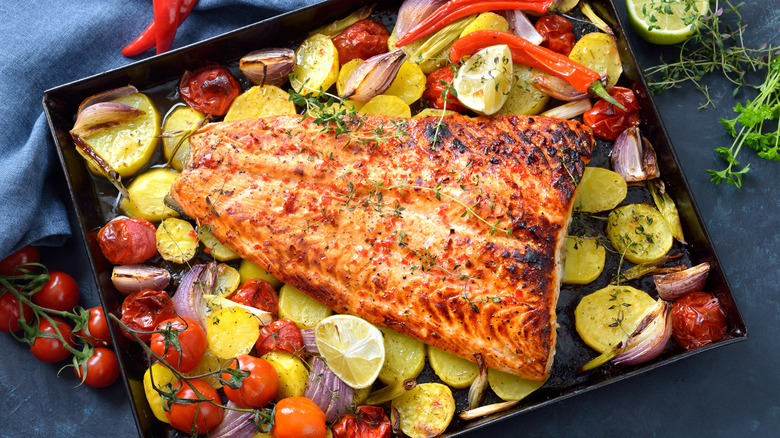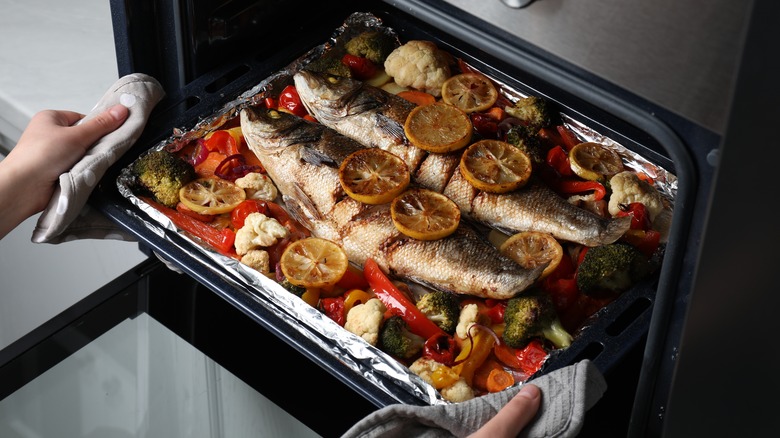A Simple Coating Is All You Need To Ensure Tender Broiled Fish
When it comes to the different ways to cook fish, broiling is one of the more underrated methods. The cooking technique involves using high heat — up to 500 degrees Fahrenheit – to quickly cook your food. While it's similar to grilling, the healthy option doesn't require you to add any oil and cooks fish in just 10 minutes.
The quick-cooking approach also browns food, giving it a nice crisp texture. Although it's a healthy alternative to frying, sometimes you may want to maintain your fish filet's natural tenderness. If that's the case, add a simple coating of butter and flour to your fish before broiling.
When fish is broiled, the natural fats and oils tend to be released, getting rid of any juiciness. To keep some of that moisture trapped in, rub the fish down with some butter and lightly coat it with flour afterward. Butter ensures that the intense blast won't dry out fish while the flour gives the exterior a golden brown crisp.
Follow these tips when broiling fish
Knowing the right settings to use when broiling your fish is imperative to getting the results you want. Ovens typically have two broil settings: high and low. Since fish tends to be on the thinner side, opt for the higher setting when broiling it. There's no need to drag out the cooking time by having it cook slowly under high temperatures. You should also be preheating your oven so that the fish cooks at an even temperature the entire time.
If you're broiling an entire fish, it's easy for it to dry and curl up while in the oven. To prevent this, make a few slashes in the fish to create pockets of air. You can also baste the fish with butter halfway through cooking to keep it moist and tender.
With the fish cooked at such a high temperature, it's easy for it to overcook. Keep a constant eye on it and don't be afraid to remove it from the oven a few times to check its progress. It should certainly be done before 10 minutes are up, but you should check to see if it flakes easily with a fork to know that it's done.

